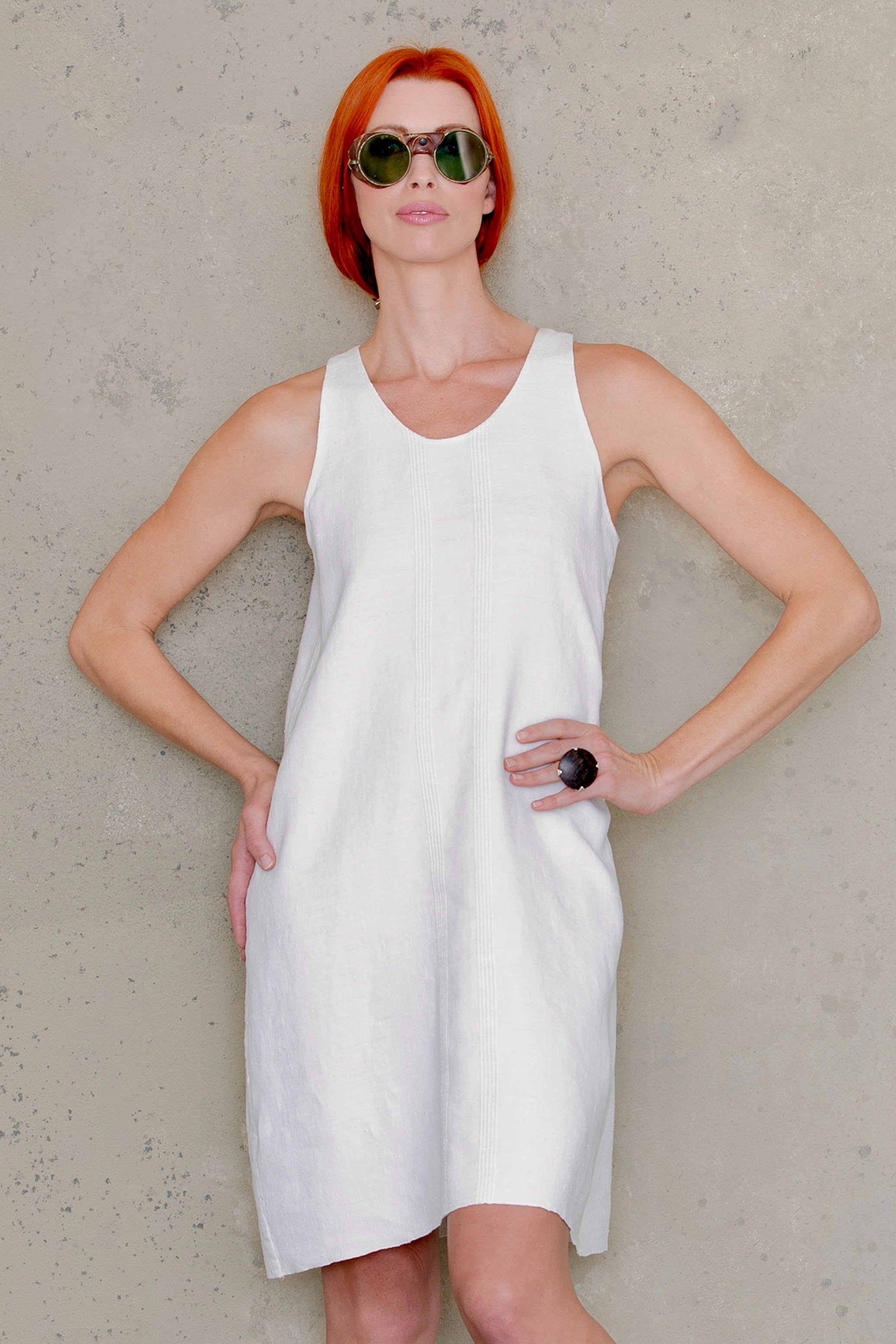How to Add an Underlining
How to add an underlining to the Ann Normandy Design Slip Dress; An element of sewing that I love is taking a great pattern and creating different looks just by changing the fabric.
It could be using a bold print or different type of material or even a lighter weight fabric.
I recently created the Ann Normandy Design Slip Dress using lightweight, semi-sheer cotton fabric, in a classic black and white polka dot. But the material was not only too sheer for my taste, but it was too lightweight to give the dress enough of that great drape that linen gives to a garment. So I knew that something was needed to add drape and add little coverage. An underlining was the perfect solution.
What is an Underlining?
An underlining is a piece of similar fabric, cut with the same pattern piece and is then joined with the fashion fabric to create one piece. An underlining is attached before you begin the construction and sewn with the fashion fabric, as one piece. It will change the hand of the fashion fabric.
In this case, that is one of the goals I wanted to achieve. Underlinings are used with costume design, to add strength and stability to a garment, especially with quick costume changes.
Conventional Linings:
A conventional lining is attached at the neckline or waistband and floats freely from the dress. Lightweight silkier fabrics are used, such as this silk twill I used to line a silk velvet Slip Dress.
With this project, I did not want to add additional weight or body to the velvet, only to protect it. See my blog post for more on sewing with velvet, SEWING VELVET: SEWING A SIMPLE DRESS PATTERN FOR THE HOLIDAYS AND BEYOND.
I find that cotton woven, conventional linings do not drape and move as freely as silkier fabrics.
Benefits of Underlining:
• Expands the type of fabrics you can use with the Slip Dress sewing pattern.
• Stabilizes lighter weight and loosely woven fabrics
• Reduces the sheerness of fashion fabrics
• Protects and strengthens delicate fashion fabrics
• Reduces the sight of seam allowances
• Adds body to lightweight fashion fabrics.
• Will help minimize wrinkles.
The Slip Dress sewing pattern is the perfect pattern to use with an underlining, as it only has two pattern pieces and two flat-felled finished seams. It is also the perfect dress pattern to create many day or evening looks.
Selecting the Perfect Underling Fabric:
First, determine what you want to achieve with the underlining. For my project, I wanted to add body and coverage, without having the underlining overpower the fashion fabric.
I considered using a voile or batiste, but couldn’t find one locally in black, so I went with lightweight black linen. It is slightly heavier than the cotton fabric and a bit sheer but had enough body that with the added weight of the cotton. It was the perfect match to get the look I wanted to achieve.
Fabric Preparation:
It is vital that all fabrics are prewashed, dried, and pressed. Each textile will shrink. If you’re using different types of materials, they will shrink at different rates. If using silk or other fabrics, follow the manufacturer’s laundering/care recommendations.
Basic Underlining Slip Dress Construction:
• After the prep work has been completed, cut the fashion fabric, and underlining from the same pattern pieces.
• Join the two pieces, wrong sides together. Pin the fashion fabric and the underlining down the center, on the grain line.
• When laying out the underlining fabric, shorten the length, (I use 1”), so it falls short of the fashion fabric. If you are using a fabric that has a clean selvage, save a step and consider laying out the underlining fabric crosswise for a clean, finished edge. You will not need to hem or use an overcast stitch or serge to reinforce the raw edge.
Baste around the entire garment for stability. If adding a dart, baste around the dart's center to avoid shifting the fabric.
Trim the seam allowances of the underlining fabric slightly shorter than the main fabric to reduce bulk. This is especially important in areas like curves and corners.
Press both sides of the fabrics together as one piece.
Construct the Slip Dress as instructed.
Using the sheer polka dot cotton elevates the Ann Normandy Design Slip Dress into a fresh summer dress you can wear on a hot summer day.
It’s also perfect for a garden party, cocktails and dinner on a patio, a great dress for a summer wedding or other events where you need to be chic in the heat.
More to come on the fabric and styling this fabulous look. Stay tuned!
Share your make and inspire fellow sewists on Instagram with the tag #sewgoodslipdress!
Happy Sewing!
Kim








